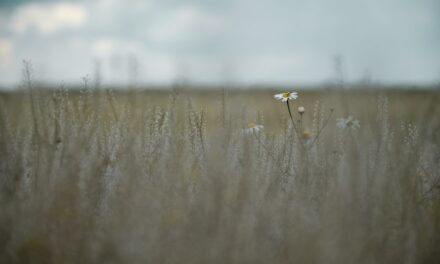Ludovico Carracci was born in 1555 in Bologna, Italy, into a family that was not particularly distinguished in the arts. His father, a tailor, and his mother, a homemaker, provided a modest upbringing that did not initially suggest the artistic prowess that would later emerge. From a young age, Ludovico exhibited a keen interest in drawing, often sketching the world around him.
This early inclination towards art was nurtured by the vibrant cultural environment of Bologna, a city rich in artistic heritage and intellectual discourse. As he grew older, he began to seek formal training, which led him to apprentice with various local artists. His education was marked by a blend of traditional techniques and the burgeoning influences of the Mannerist style that dominated the period.
Ludovico’s formative years were spent absorbing the works of prominent artists such as Correggio and Titian, whose mastery of colour and composition left a lasting impression on him. He also studied the works of the great Renaissance masters, which instilled in him a deep appreciation for classical ideals. This combination of influences would later inform his own artistic style, as he sought to balance the emotional expressiveness of Mannerism with the clarity and harmony of Renaissance art.
Summary
- Ludovico Carracci was born in Bologna, Italy in 1555 and received his early artistic training from his cousin, Annibale Carracci.
- He was influenced by the works of Correggio and Titian, and developed a style that combined elements of naturalism and classicism.
- Carracci co-founded the Carracci Academy, which aimed to reform the approach to art in Bologna and had a significant impact on the development of Baroque art.
- His major works include “The Lamentation” and “The Martyrdom of St. Stephen”, which showcase his mastery of composition and emotional expression.
- Carracci’s legacy is evident in the work of later Baroque artists, and his emphasis on drawing from life and studying the works of the Old Masters continues to influence artists today.
Artistic Influences and Style
Influence of the Venetian School
He was particularly inspired by the naturalism of the Venetian school, which emphasised the importance of light and colour in creating lifelike representations. This influence is evident in his use of vibrant palettes and dynamic compositions that draw the viewer’s eye across the canvas.
A Reverence for the Human Form
Additionally, Carracci’s exposure to the works of Michelangelo and Raphael instilled in him a reverence for the human form, which he depicted with both anatomical precision and emotional depth. However, it was not merely imitation that defined Carracci’s style; rather, he sought to innovate within the framework of established traditions.
Towards a More Grounded Approach
He was instrumental in moving away from the exaggerated forms and artificiality of Mannerism towards a more grounded approach that celebrated realism and human emotion. This shift is particularly notable in his treatment of subjects, where he often infused everyday scenes with a sense of dignity and grace. His ability to capture the subtleties of human expression and interaction set him apart from his contemporaries and laid the groundwork for future developments in Baroque art.
Career and Achievements
Ludovico Carracci’s career flourished as he established himself as a leading figure in the Bolognese school of painting. In 1584, he co-founded the Carracci Academy with his cousins Agostino and Annibale, which became a pivotal institution for art education in Italy. The academy was notable for its emphasis on direct observation from nature and the study of classical works, fostering a generation of artists who would carry forward Carracci’s ideals.
Under his guidance, students were encouraged to explore their creativity while adhering to rigorous technical standards, resulting in a rich legacy of artistic innovation. Throughout his career, Carracci received numerous commissions for altarpieces and frescoes, many of which showcased his ability to blend narrative depth with visual splendour. His work on the frescoes in the Palazzo Farnese in Rome is particularly celebrated, demonstrating his mastery of large-scale compositions that engage viewers with their dramatic storytelling.
Carracci’s achievements were recognised during his lifetime, earning him accolades from patrons and critics alike. His influence extended beyond his immediate circle, as he played a crucial role in shaping the direction of Baroque art, paving the way for future luminaries such as Caravaggio.
The Carracci Academy
The Carracci Academy stands as one of Ludovico Carracci’s most significant contributions to the art world. Founded in 1584 alongside his cousins Agostino and Annibale, the academy aimed to reform art education by integrating rigorous technical training with an appreciation for nature and classical antiquity. This innovative approach attracted aspiring artists from across Italy, eager to learn from the Carracci’s expertise.
The academy became a hub for artistic exchange, fostering collaboration among students and encouraging them to develop their unique styles while adhering to foundational principles. At the heart of the academy’s philosophy was the belief that art should be rooted in observation and experience rather than mere imitation. Ludovico emphasised the importance of studying live models and engaging with the natural world to cultivate a genuine understanding of form and colour.
This pedagogical approach not only elevated the standards of artistic practice but also contributed to a broader cultural shift towards realism in art. The legacy of the Carracci Academy endured long after its founding, influencing generations of artists who sought to balance technical skill with creative expression.
Ludovico’s Major Works
Ludovico Carracci’s oeuvre encompasses a diverse range of subjects and styles, reflecting his versatility as an artist. Among his most celebrated works is “The Bean Eater,” painted around 1584, which exemplifies his ability to infuse everyday scenes with emotional resonance. The painting depicts a humble peasant enjoying a simple meal, yet Carracci elevates this mundane moment through his masterful use of light and shadow, creating a sense of intimacy that invites viewers into the subject’s world.
Another significant work is “The Assumption of the Virgin,” created for the church of San Giovanni in Monte in Bologna. This altarpiece showcases Carracci’s skill in composition and colour, as he orchestrates a dynamic arrangement of figures that draws the eye upward towards the heavenly realm. The painting reflects his deep understanding of religious themes while also demonstrating his innovative approach to narrative storytelling through visual means.
These major works not only highlight Carracci’s technical prowess but also underscore his commitment to capturing the human experience in all its complexity.
Legacy and Impact
Innovative Techniques and Thematic Explorations
Artists such as Caravaggio and Rubens drew inspiration from Carracci’s innovative techniques and thematic explorations, furthering the evolution of painting during this transformative period.
A New Approach to Art Education
Moreover, Carracci’s establishment of the Carracci Academy marked a significant shift in art education, promoting a more holistic approach that combined technical skill with creative exploration. This model would be emulated by subsequent art schools across Europe, shaping the way artists were trained for centuries to come.
A Pivotal Figure in Art History
His influence extended beyond painting; Carracci’s ideas about composition and colour theory resonated within other artistic disciplines, including sculpture and architecture, solidifying his status as a pivotal figure in art history.
Personal Life and Relationships
Ludovico Carracci’s personal life was marked by both professional collaborations and familial bonds that shaped his artistic journey. He maintained close relationships with his cousins Agostino and Annibale throughout their careers, working together not only at the Carracci Academy but also on various artistic projects. This familial connection fostered an environment of mutual support and creative exchange that enriched their individual practices while contributing to their collective legacy.
Despite his professional success, little is known about Carracci’s private life beyond his artistic endeavours. He remained dedicated to his craft throughout his life, often prioritising work over personal relationships. However, it is evident that his experiences and interactions with fellow artists influenced his work profoundly.
The camaraderie shared among members of the Bolognese school created a vibrant artistic community that encouraged experimentation and innovation—qualities that are evident in Carracci’s own oeuvre.
Critical Reception and Contemporary Influence
Ludovico Carracci’s work received considerable acclaim during his lifetime, with critics praising his ability to blend technical skill with emotional depth. His innovative approach to composition and colour resonated with both patrons and fellow artists alike, establishing him as a leading figure in Bolognese painting. However, as art movements evolved over time, Carracci’s reputation experienced fluctuations; while he was celebrated during the Baroque period, later critics sometimes overshadowed him with more radical figures like Caravaggio.
In contemporary discourse, there has been a resurgence of interest in Carracci’s contributions to art history. Scholars have begun to reassess his role within the broader context of Baroque art, recognising him as a pivotal figure who bridged the gap between Renaissance ideals and Baroque dynamism. His emphasis on naturalism and emotional expression continues to resonate with modern audiences, influencing contemporary artists who seek to explore similar themes within their work.
As such, Ludovico Carracci remains an enduring figure whose legacy continues to inspire new generations of artists and art enthusiasts alike.
For a deeper understanding of how artists use their work to make political statements, check out the article “Political Statements in Street Art: Activism Through Imagery”. This piece explores the power of art as a tool for social change and highlights the ways in which artists can use their work to challenge the status quo. It provides valuable insights into the role of art in activism and sheds light on the ways in which artists can make a difference through their creative expression.
FAQs
Who was Ludovico Carracci?
Ludovico Carracci was an Italian painter, etcher, and printmaker who was born in Bologna in 1555. He was one of the founders of the Baroque style of painting and was a prominent figure in the Carracci family of artists.
What is Ludovico Carracci known for?
Ludovico Carracci is known for his role in the development of the Baroque style of painting, as well as for his skill as a painter, etcher, and printmaker. He was also known for his work as a teacher, having founded the Accademia degli Incamminati in Bologna.
What are some of Ludovico Carracci’s most famous works?
Some of Ludovico Carracci’s most famous works include “The Lamentation of Christ,” “The Martyrdom of St. Stephen,” and “The Baptism of Christ.” He also worked on frescoes in the Palazzo Fava in Bologna and the Palazzo Magnani in Bologna.
What was Ludovico Carracci’s artistic style?
Ludovico Carracci was known for his naturalistic and classical approach to painting, which was a departure from the Mannerist style that was popular at the time. He focused on creating realistic and emotionally engaging works of art.
What was the Carracci family’s contribution to art?
The Carracci family, which included Ludovico Carracci, his cousins Annibale and Agostino, and his uncle Lodovico, played a significant role in the development of the Baroque style of painting. They were known for their emphasis on naturalism and their rejection of the artificiality of Mannerist art.


